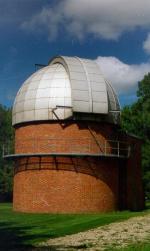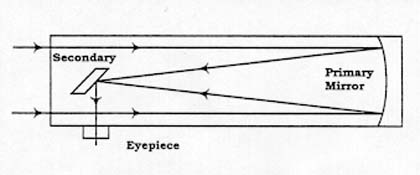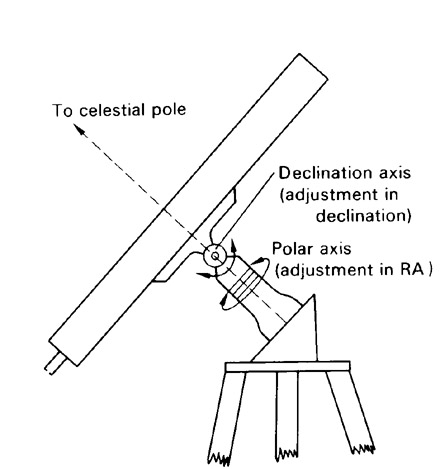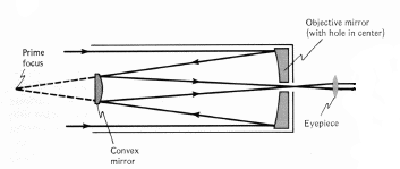| Warner and Swasey Observatory |
| Case Western Reserve University | Nassau Station |
| Visitors |
|
» Home » News » Gallery » Reference » Weather |
| Science Resources |
|
» NSRT User Interface » Software » Data Archive » Download Data |

|
 |
Telescopes capture a sample of light emitted or reflected from a distant source. That light is then converged by lens, mirrors, and other optical elements into a useful-sized image of the original source.

- Primary Optic is the first optical surface that collects the light and forms an image.
- Auxiliary Optics correct the image or modify the light beam. They might be eyepieces, or additional lenses and mirrors.
- The Size of a telescope refers to the diameter of the primary optic. This determines the telescope's ability to resolve small objects.
A Refractive Telescope uses a refractive lens as the primary optic.
A Reflective Telescope replaces the refractive lens with a reflective mirror as the primary optic. Most telescopes in use today are reflective telescopes.
Here is a diagram of a reflector telescope:

The Focal Length is the distance from the primary optic to the focusing point of the telescope.
The Focal Ratio is another way to describe a telescope. The focal ratio is simply the focal length divided by the diameter of the primary optic.
During an observation, the telescope must track the stars to offset the motion of the Earth. An Equatorial Mounting is one in which the telescope rotates along an axis parallel to the Earth's North-South polar axis.

A Cassegrain Focus is one in which the focal point is behind the primary mirror. Here is a diagram of a Cassegrain Focus:

Created by Rebecca Stanek, January 18, 1999.
©1997, 1998, 1999 CWRU Astronomy Dept.
comments
Last modified March 14, 1999
Case Western Reserve University